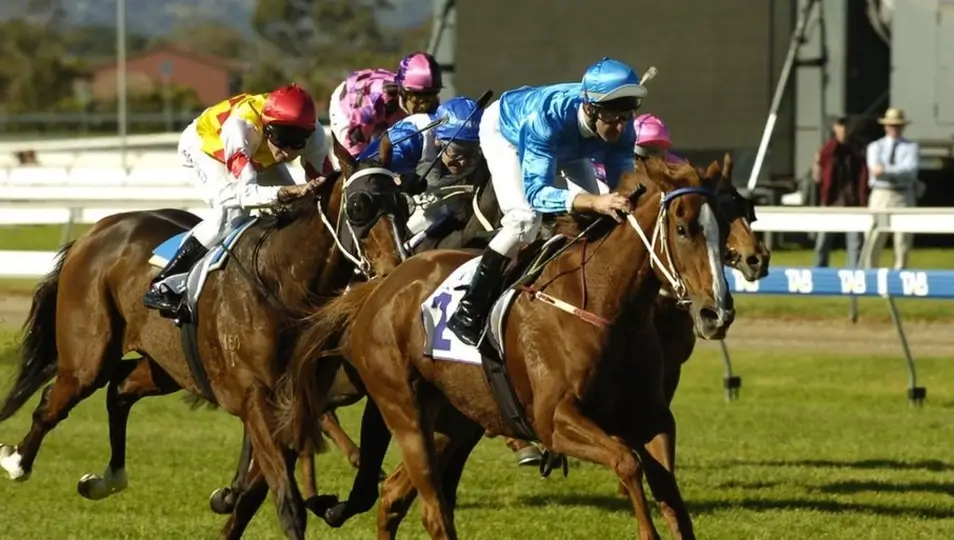How to bet on horse races successfully

Horse racing is one of the most popular avenues of sports betting out there. For many people, watching these powerful animals and their experienced jockeys race around the track with such vigor and intensity can be quite exhilerating. And it’s even more exciting when money is on the line.
Here is how to get started with horse betting if you’re new to betting on this popular sport.
Types of horse race wagers
There are two main types of wagers to choose from when betting on horse races: straight wagers and exotic wagers. Beginners often start with straight wagers, since they’re more straightforward.
Horse betting: Straight wagers
A straight wager involves picking the horses you believe will come in first, second, and third. And it can be as low as a $2 bet if made at the track.
A straight wager is a bet on a single horse. Here are the types of straight wagers bettors can make:
Win: This is simply betting on the horse that you believe will come in first place. If the horse you picks comes in first you can collect.
Place: This is when you bet on the place your horse will come in first or second. If you choose correctly you collect. The payout is less than a win wager, but there’s a higher chance of the horse coming in one of the two spots.
Show: This is when you bet on which horse you think will come in first, second, or third. While the reward here is even smaller, there’s a that much greater a chance of winning.
Across the Board: A bet across the board means you’re betting on the horse that you believe will win, place, and show. It’s three bets in one. It’s a more expensive bet to make, and it may have lower profit potential.
Horse betting: Exotic wagers
Exotic wagers allow you to make multiple bets on multiple horses within a single wager. Exotic wagers are more difficult to win and will require you to do a bit more studying before the race. The payoffs are much greater than in the straight wagers listed above, but will still take advanced skill to pull off.
Here are some exotic wagers you’ll often see at horse races:
Exacta: This is when you bet on two horses to come in first and second. You have to pick the exact order. The payoff can be pretty impressive, so this exotic wager is quite popular among more advanced bettors who know about the horses. If you pay extra (usually double), you can “box” your exacta bet. This means the two horses can come in any order in the top two spots and you’ll still win.
Trifecta: This bet has you selecting which horses will finish in first, second, and third. It must be in the exact order. You can box this bet as well, meaning the three horses can come in the top three but in any order. This will cost you double, but means you’ll have a better chance of collecting.
Quinella: This is when you bet on which two horses will come in first and second in any order. As long as the two horses you choose come in the first two spots, you win. It won’t pay as much as a box exacta, but it’s cheaper to place a quinella bet.
Superfecta: This bet has you choose the four horses that will finish first, second, third, and fourth in that exact order. You can box a superfecta at an additional cost, much like the exacta and trifecta. This is an appealing bet because it’s cost-effective, but it’s much harder to get a superfecta!
How to choose a winning horse to bet on
While you can arrive at a race track, place a bet, and hope for the best, you can have better luck if you do some research prior to placing your bets. Become very familiar with the race day program! This program will have a bunch of information within that will help you make a smarter bet. You’ll see a lot of words you might not understand, but you’ll start to get the hang of it as you continue reading.
It’s also good to check out the “class levels” of the horses. There are different competition levels, or classes, in horse racing. The four classes include maiden, claiming, allowance, and stakes. Horses will move up and down these classes throughout the year depending on their performance. If you notice that a horse recently moved up a level, you might want to keep in mind that the other horses in this class have more experience in that level of competition.
Always check out the surface type. There are different surfaces for horse racing, from natural dirt to grass. Horses actually perform differently depending on the type of surface. Some horses prefer certain track types more than others. Find out which track types the horses did well on and which tripped them up.
The jockey is also important. Check out their race history and see their recent placements. If they consistently place high with a variety of horses, that’s a good indicator that they are pretty talented. You should also check if the jockey has a history with the particular horse they are currently racing.
Lastly, always keep an eye on the horses before the race begins. Does the horse look ready to run? Does it look energetic? Or does the horse seem lethargic and distracted? This is not as reliable as the above tips, but this might come in handy in certain situations. It never hurts to go with your gut!

